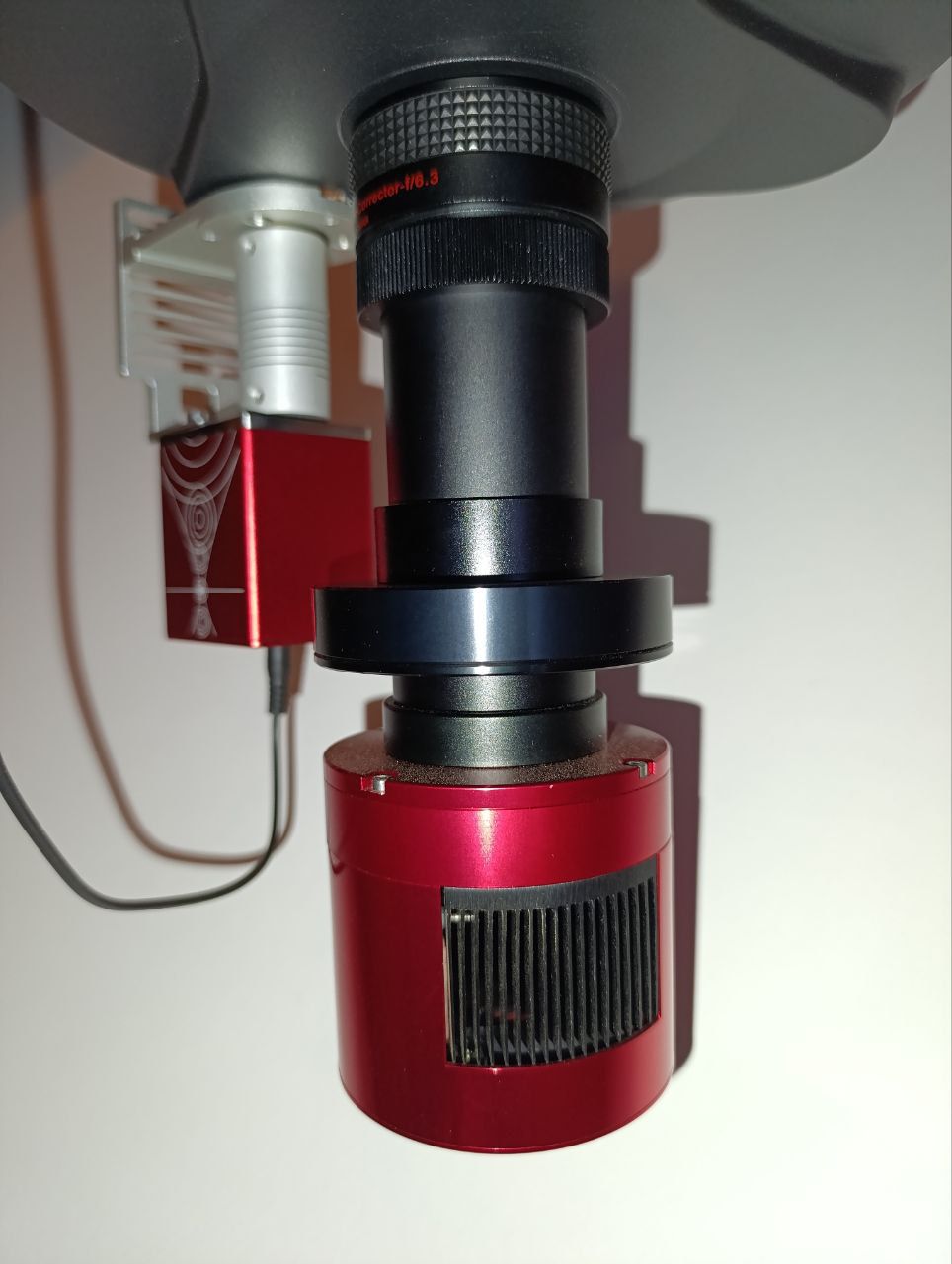My setup uses an imaging train with an OSC camera + filter. If you're using filters too, don’t forget to factor in the glass thickness in your final measurements. For example, the Optolong L-Pro filter I’m using has a 2mm thickness, so I added 0.7 mm to the backfocus (2 mm ÷ 3).
Here’s how I assemble my imaging train for DSO imaging — from scope to camera:
- 50 mm – Celestron T-Adapter (screwed directly onto the reducer)
- 16.5 mm – ZWO M48 to T2 adapter
- 17 mm – Altair Filter Holder
- 0.7 mm – added distance for filter glass thickness
- 8 mm – T2 extension ring
- 11 mm – T2 ring that came with the camera
- 6.5 mm – camera flange to sensor distance
- 1.5 mm – spacer ring
That totals 111.2 mm from the reducer glass to the camera sensor.
With this distance, I get a focal length that ranges between 1278 mm and 1283 mm, which is very close to theoretical.
Also, star shapes at the image edges have minimal "tails" with this setup, indicating I’m likely hitting the correct focal plane and achieving the flattest image possible with this reducer.
Hope this helps someone out there struggling with the same thing. Clear skies! ✨



